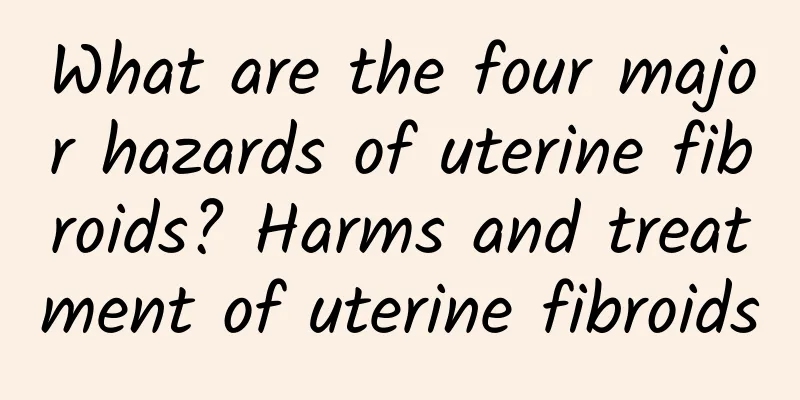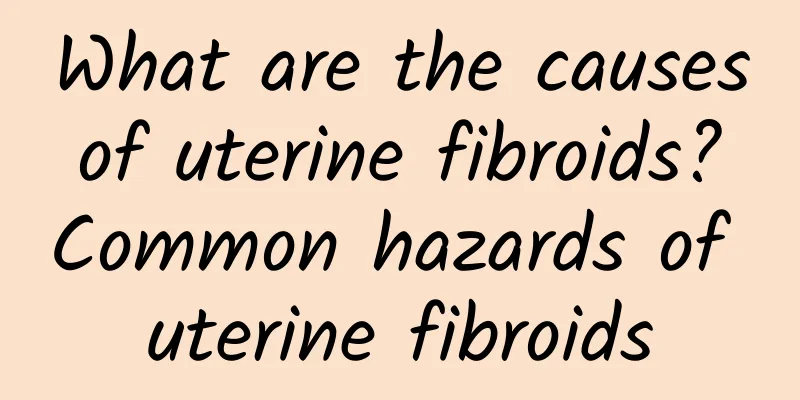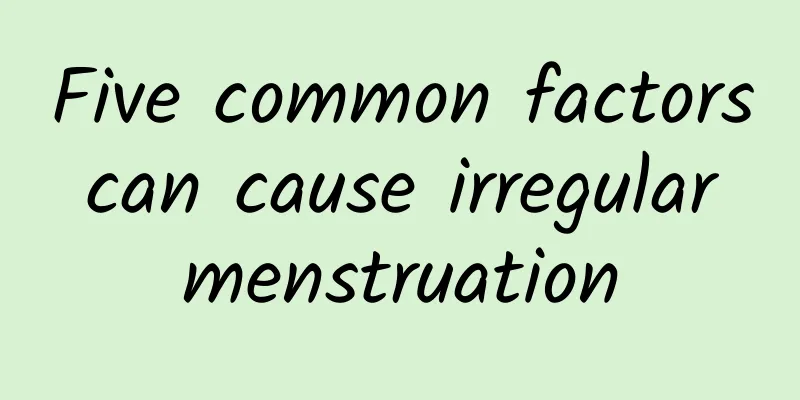What are the four major hazards of uterine fibroids? Harms and treatment of uterine fibroids

|
What are the four major hazards of uterine fibroids? Harms and treatment of uterine fibroids Uterine fibroids are common benign tumors of the female reproductive system, and their harm cannot be ignored. Understanding the harm of uterine fibroids is crucial for taking timely treatment measures. This article will discuss the four major harms of uterine fibroids and their treatment methods. 1. Harm 1: Irregular menstruation Menstrual irregularities are one of the common manifestations of uterine fibroids. The location of the fibroids may interfere with normal uterine contractions and blood discharge. This may lead to irregular menstrual cycles, excessive or insufficient menstrual flow, prolonged or shortened menstruation, and other problems. Treatments include medication, surgical removal of the fibroids or uterus, etc. 2. Harm 2: Infertility or difficulty in getting pregnant The growth of uterine fibroids may also have adverse effects on female fertility. If the fibroids are located in the uterine cavity, it may hinder the implantation of the fertilized egg; if the fibroids are located outside the uterine cavity, it may interfere with the normal function of the fallopian tubes. Treatments include surgical removal of the fibroids, assisted reproductive technology, etc. 3. Hazard 3: Pelvic pain Some patients may experience pelvic pain, especially during menstruation or after sexual intercourse. This is mainly caused by compression or torsion of the fibroids. Treatments include medication to relieve pain, surgery to remove the fibroids, etc. 4. Hazard 4: Compression of bladder and rectum The growth of fibroids may put pressure on the nearby bladder and rectum, leading to frequent urination, urgency, and difficulty in defecation. Treatments include medication to relieve symptoms and surgical removal of fibroids. Treatment: 1. Observation and treatment: For patients with no obvious symptoms, small and slow-growing fibroids, observation and treatment can be chosen, with regular checks on the size and growth of the fibroids. 2. Drug treatment: For patients with mild symptoms, drug treatment can be used to control the growth and symptoms of fibroids. Drugs can inhibit the growth of fibroids by controlling estrogen levels. 3. Surgical treatment: For patients with rapidly growing fibroids and obvious symptoms, or patients with severe symptoms such as infertility and pelvic pain, surgical removal of the fibroids or uterus is usually considered. The surgical method can be laparoscopic surgery or laparotomy. The four major hazards of uterine fibroids include irregular menstruation, infertility or difficulty in getting pregnant, pelvic pain, and compression of the bladder and rectum. Different hazards may require different treatments, including observation and treatment, drug therapy, and surgical treatment. It is recommended that women undergo regular gynecological examinations to detect and treat uterine fibroids early and avoid unnecessary pain and complications. |
<<: What kind of salt is good for treating uterine fibroids?
Recommend
Just love big fish and meat? Eat chicken breast to lose weight easily
The Lunar New Year is approaching, and the highli...
There is a best time to eat breakfast, which protects your heart and helps you lose weight! Low glycemic index foods stabilize blood sugar
Breakfast is the source of energy to start the da...
Can’t control your appetite and want to eat and drink a lot? 7 tips to help you control your appetite and avoid obesity
When you suddenly feel greedy and cannot control ...
Does the thickness of the endometrium affect pregnancy?
Will the thickening of the endometrium affect pre...
Several easily overlooked causes of adnexitis
Adnexitis is a common inflammation of the ovaries...
Common symptoms of uterine fibroids and adenomyosis
Uterine fibroids and adenomyosis are both common ...
What are the symptoms of uterine fibroids? What are the diagnostic methods for uterine fibroids?
Symptoms Most uterine fibroids, even if they are ...
Causes of bacterial vaginosis
The most common disease in the vagina is vaginiti...
What are the causes of miscarriage in early pregnancy? There are 5 reasons
Most early miscarriages are spontaneous miscarria...
Bento calorie bomb! Roast meat kilocalories No.1
The Hong Kong-style roast meat bento is very popu...
Treatment of Sudden Menstrual Arrest with Chinese Patent Medicine and Diet Therapy
Treatment with Chinese patent medicine: Xiao Chai...
What are the causes and symptoms of left ovarian cysts?
Left ovarian cyst is a common benign tumor in the...
What juice is good to drink after uterine fibroid surgery? What tea can I drink after uterine fibroid surgery?
Uterine fibroids are a common female disease, and...
Create perfect curves? Traditional Chinese medicine teaches you how to take care of your spleen and stomach, promote metabolism, and increase muscle and reduce fat
Want to make your appearance look curvier? Simply...
Yam not only lowers blood sugar and blood pressure, but also helps burn fat and lose weight! How to eat yam to get the best effect?
Yam is one of the essential ingredients in home c...









